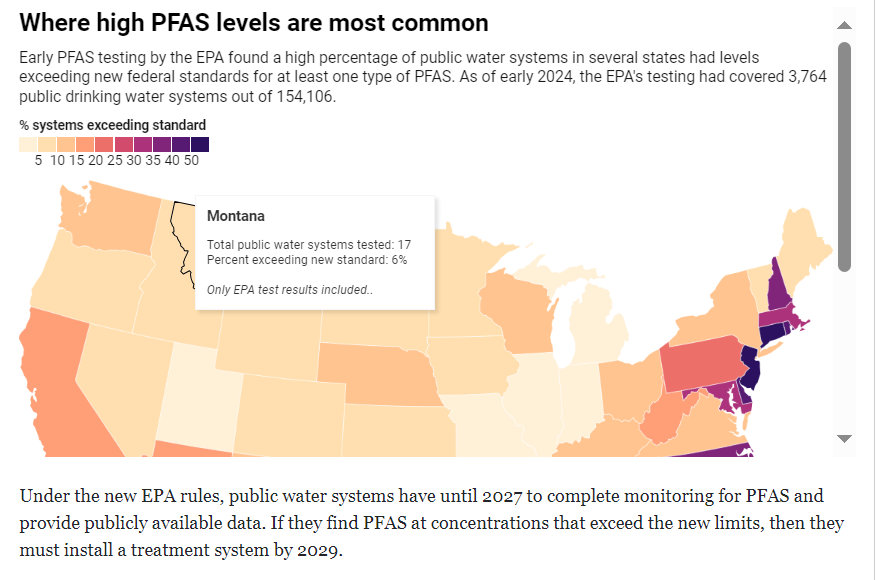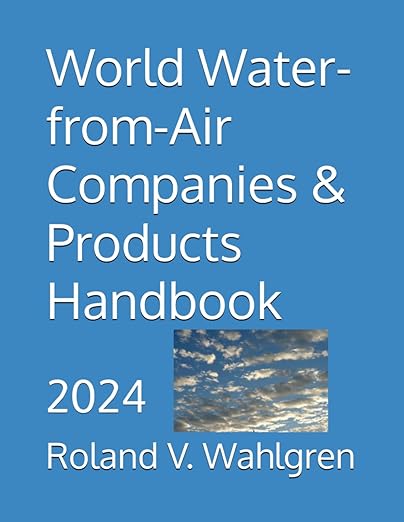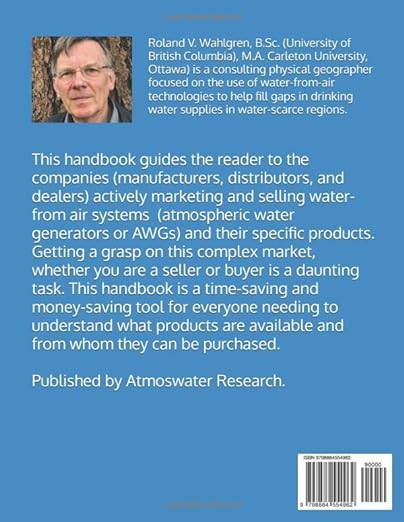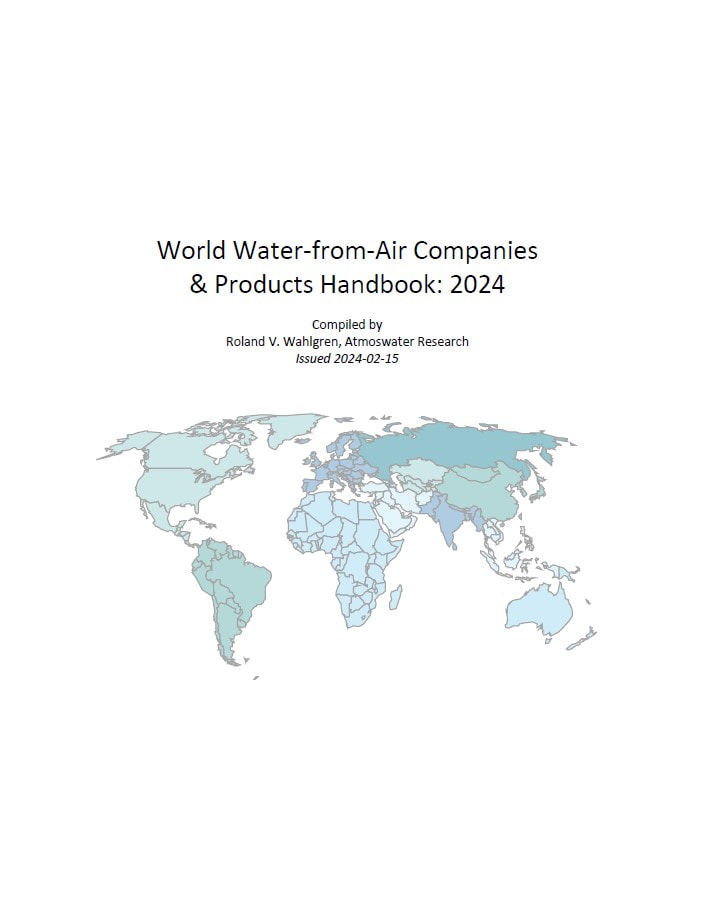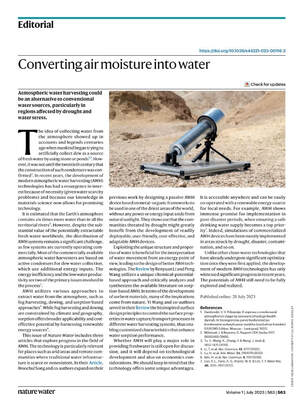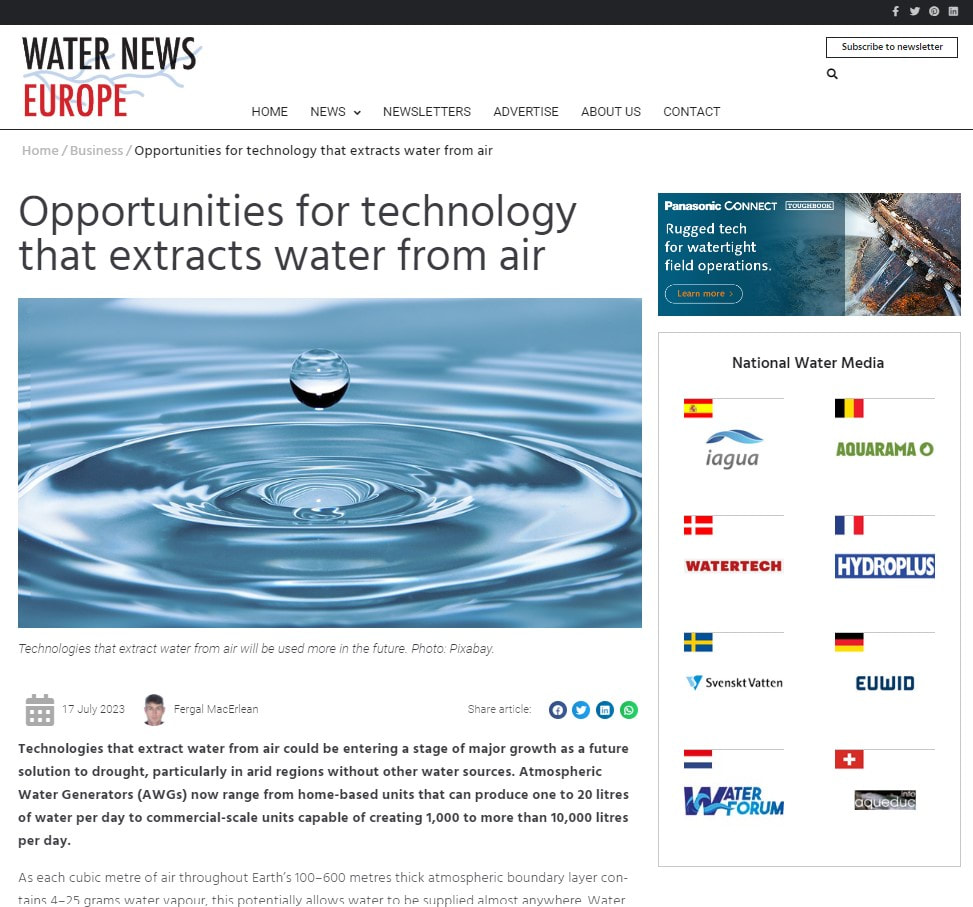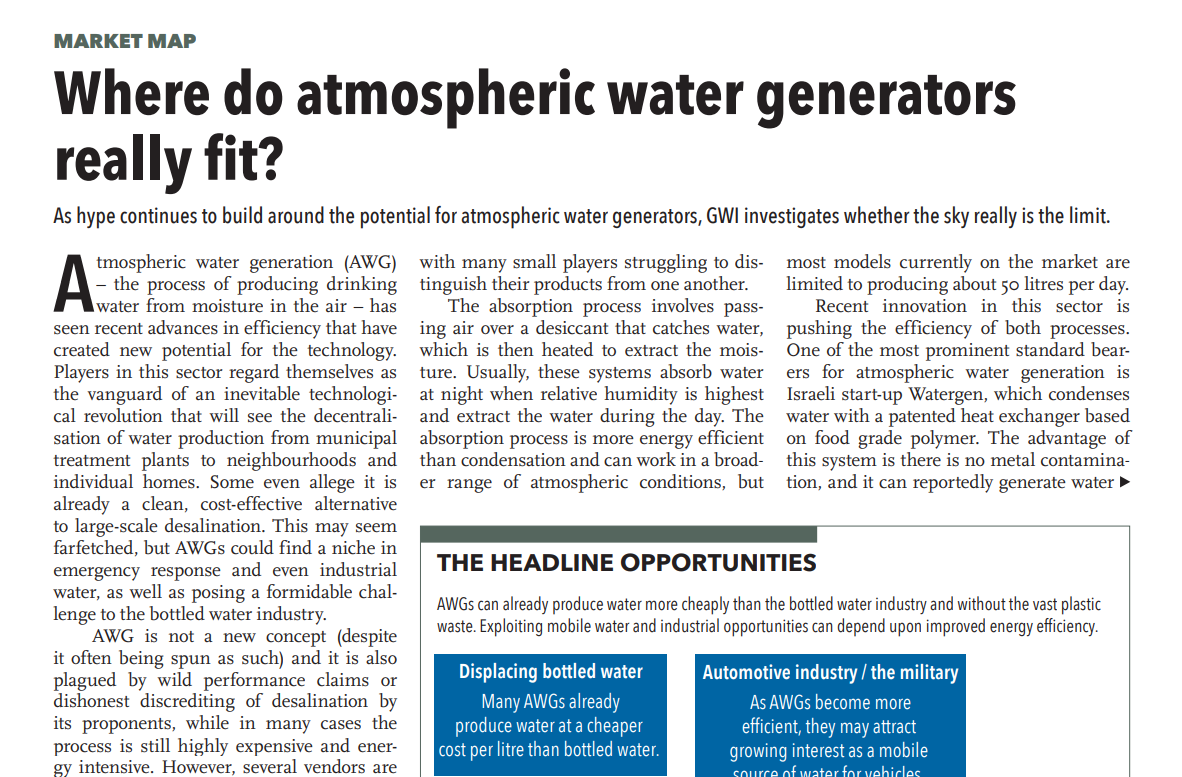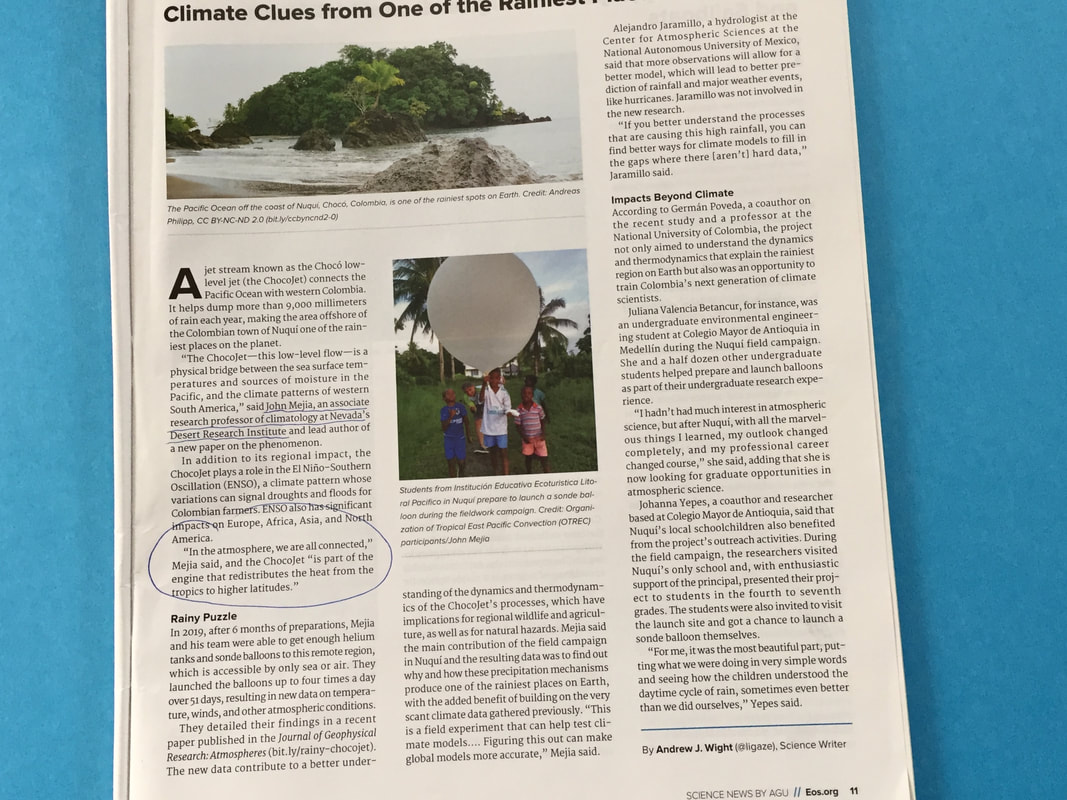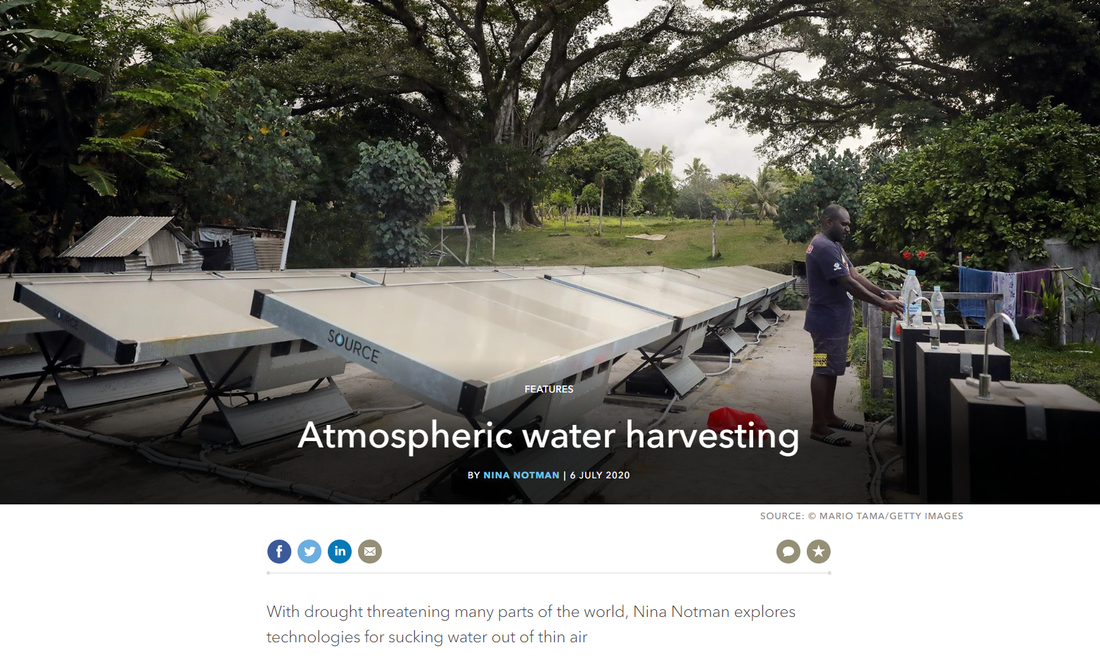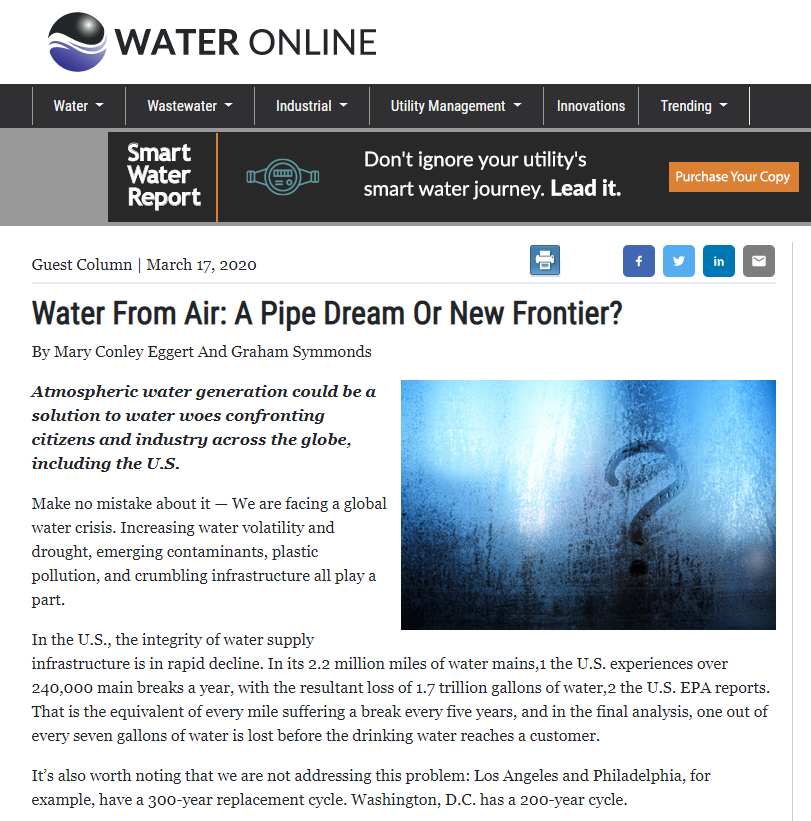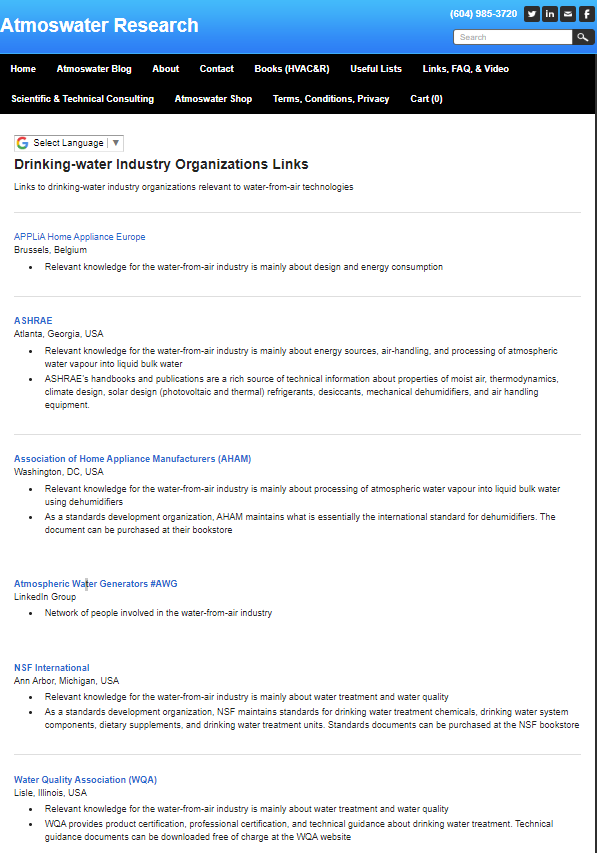 Go to article by clicking on image.
Go to article by clicking on image.
|
If you sell AWGs, I think the interactive map accompanying this Water Online article could serve as a useful guide for where to focus AWG marketing efforts in the USA.  Go to article by clicking on image. Go to article by clicking on image.
0 Comments
Some people prefer eBooks, others prefer printed books. Your choice!
Our latest publication is available as an eBook (PDF). This handbook includes active companies and tables detailing specifications of their atmospheric water generator products. You can order it at the Atmoswater Shop.
Water-from-air technologies are attracting serious attention as shown by a recent editorial in the journal Nature Water. Highlights from the editorial include:
Water News Europe published this article in July 2023 outlining the present state of the water-from-air industry. Several industry sources are referenced, including Roland Wahlgren, Atmoswater Research.
Basic hygiene services in schools depends on clean water being available for handwashing. AWGs could be designed specifically for this application. Table 5 below shows the national statistics. The world file tables available at https://washdata.org/data/downloads also show urban and rural statistics so quite detailed market analyses are possible. 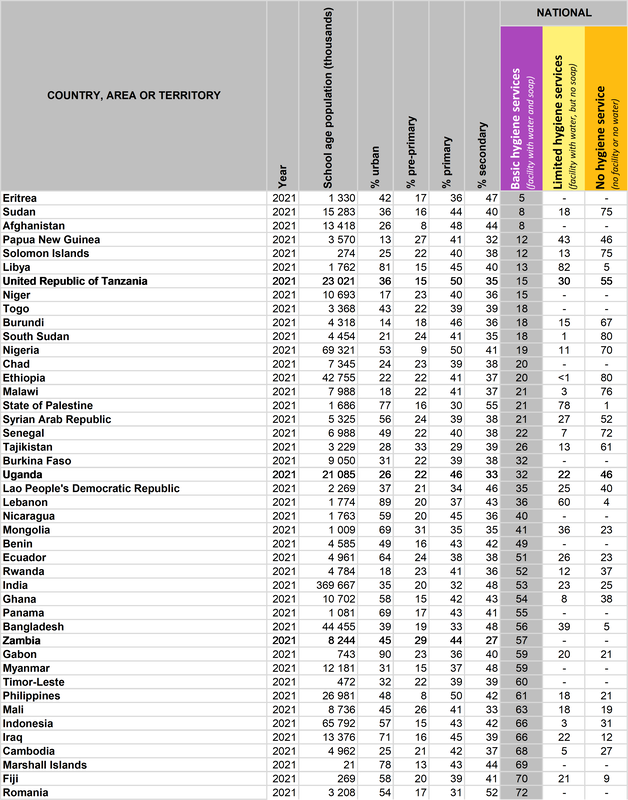 Table 5: Forty-four countries, areas, or territories have school basic hygiene services less than 75% of the school age population. This data is for 121 out of 180 countries in the database. For 59 countries there is no data for school basic hygiene services. The blog author condensed and sorted the data according to lowest to highest national proportion of basic hygiene services. Data source: Progress on household drinking water, sanitation and hygiene 2000-2020: five years into the SDGs. Geneva: World Health Organization (WHO) and the United Nations Children’s Fund (UNICEF), 2021. Licence: CC BY-NC-SA 3.0 IGO. Data gaps are indicated by a dash (-). Status of the water-from-air industry in 2021 from the viewpoint of Global Water Intelligence18/11/2021 This interesting article by Global Water Intelligence (GWI) gives their view of the state of the water-from-air industry in July 2021. Drupps AB provided a link to the full article via their website.
More musings---see previous blog post. This time I was reading a recent issue of Eos (August 2021), published by the American Geophysical Union (AGU). One article (Climate Clues from One of the Rainiest Places on Earth, page 11, by A. J. Wight) contained a wonderful quote. "In the atmosphere, we are all connected," and the [low-level jet stream] "is part of the engine that redistributes the heat from the tropics to higher latitudes." So stated John Mejia, associate professor of climatology at Nevada's Desert Research Institute. The water-from-air industry's main resource is the water vapour in the atmosphere. Water vapour is transported great distances between regions on Earth by the global atmospheric circulation processes. We are all connected in seeking to utilize this water resource residing in our "atmospheric commons". Atmospheric water vapour is, of course, just one part of the water cycle, one of the many essential planetary cycles of natural materials.
This is an interesting article about the drinking-water-from-air industry. It also includes a section on fog harvesting. Atmoswater Research got a nice mention!
This newly published article, by water industry experts Mary Conley Eggert and Graham Symmonds, is worthwhile reading for current perspectives about the role of water-from-air technologies in drinking water supply infrastructures.
Drinking-water Industry Organizations Links is a new page on the Atmoswater Research website. I hope people in the industry find it to be useful. Please tell me if there are other industry organizations that should be listed on this page. Thanks!
|
Roland Wahlgren
I have been researching and developing drinking-water-from-air technologies since 1984. As a physical geographer, I strive to contribute an accurate, scientific point-of-view to the field. Archives
May 2024
Categories
All
|
